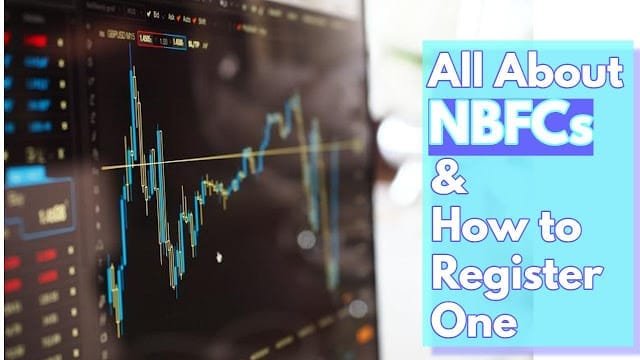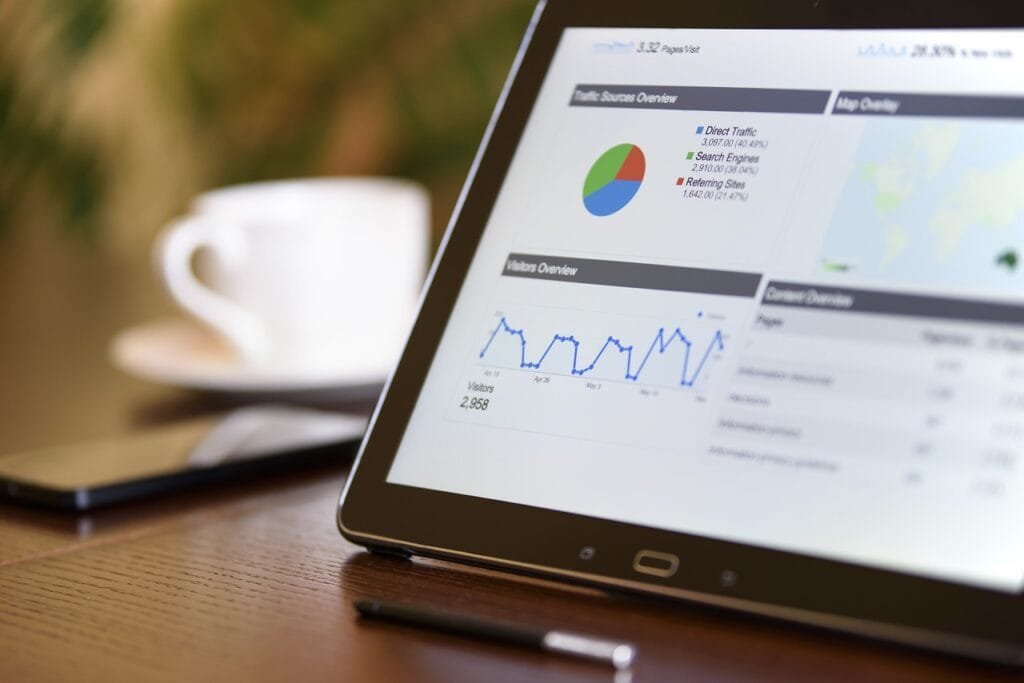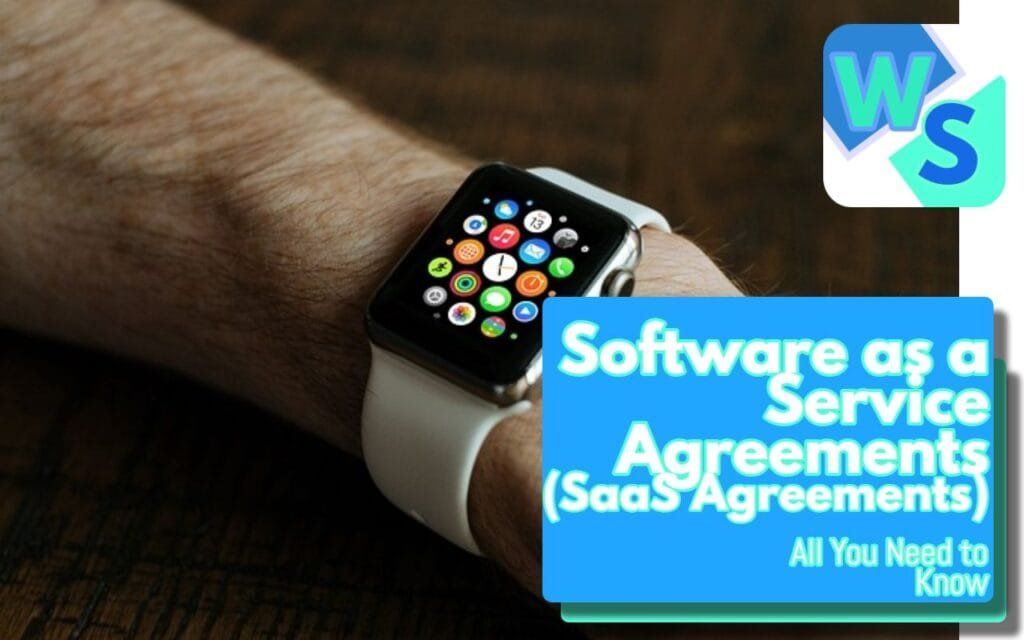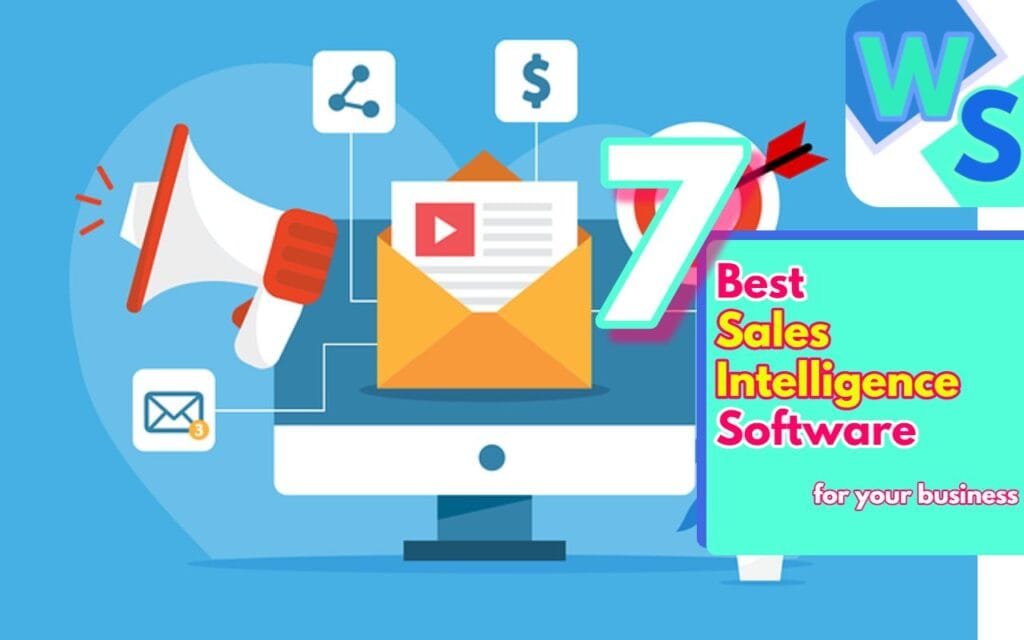With over 2.8 billion monthly active users, Facebook remains an unbeatable platform for businesses aiming to reach a broad audience. One potent tool in the arsenal of advertisers is the Facebook Lead Generation Ads. These ads allow businesses to collect potential client information without the user having to leave Facebook. In this deep dive, we’ll explore the intricacies of this ad type, uncovering best practices and tips to maximize your ROI.
Facebook Lead Generation Ads are a specific ad format that allows advertisers to collect user information directly from the ad interface. Users who click on these ads see a form, which they can fill out to provide their contact details or answer some business-specific questions.
Why Lead Generation Ads Are So Important?
- Seamless User Experience: Users don’t need to navigate away from Facebook. This reduces the chances of them dropping off due to load times or mobile unresponsiveness.
- High-Quality Leads: The forms can be customized to ask relevant questions, ensuring that you get valuable information from genuinely interested users.
- Cost-Effective: As opposed to guiding traffic to an external landing page and paying for each click, lead ads can sometimes result in a lower cost per lead.
Setting Up Your Lead Generation Ads
Step-by-Step Guide
- Choose your Objective: In the Facebook Ads Manager, start by choosing the ‘Lead generation’ objective.
- Select Your Audience: Utilize Facebook’s robust targeting options. Consider factors like location, demographics, interests, and behaviors.
- Set Your Budget: Define a daily or lifetime budget based on your marketing goals and resources.
- Design Your Ad: Use high-quality images or videos that align with your message. Craft compelling headlines and ad copy that highlights your value proposition.
- Create Your Lead Form: Choose questions that are relevant to your offering. Ensure the form is not too lengthy, deterring users from completing it.
Best Practices for Designing the Form
- Keep It Short: Only ask for necessary information. Each additional question can decrease the conversion rate.
- Use Context Cards: These are an optional feature that provides additional information about your offering before users fill out the form. They can be instrumental in setting the right expectations.
- Optimize for Mobile: Ensure your lead ad looks good and works smoothly on mobile devices since a significant portion of Facebook users accesses the platform via mobile.

Related: Check out our free SEO suite

Enhancing Your Ad’s Performance
A/B Testing
Experimentation can be the key to success. Test different ad creatives, headlines, form questions, or call-to-action buttons to understand what resonates most with your audience.
Targeting and Retargeting
Lookalike Audiences: Once you’ve gathered some leads, use them to create a lookalike audience. This feature allows Facebook to find users with similar profiles to those who have already shown interest in your offering.
Retargeting: If a user interacts with your ad but doesn’t complete the form, consider retargeting them with a slightly altered message or a special incentive.
Integrating with CRM
Synchronize your leads with your Customer Relationship Management (CRM) system. This allows for immediate follow-ups and a seamless integration into your sales process.
Monitoring and Analyzing Results
Using Facebook Analytics
Keep a close eye on metrics such as:
- Lead Form Completion Rate: Indicates how many users who clicked on your ad went on to complete the form.
- Cost Per Lead: Helps you assess the efficiency of your ad spending.
- Lead Quality: By integrating with your sales system, monitor how many leads transition to actual customers.
Continuous Optimization
Digital marketing is a continuous cycle of improvement. Regularly revisit and refine your strategies based on your analytical findings.
Understanding Lead Quality and Optimization
The Importance of Lead Quality
While quantity has its perks, the quality of leads is crucial. High-quality leads are those that are more likely to convert into paying customers. Assessing lead quality helps you refine your ad targeting and understand the true value of your lead gen campaign.
Ways to Assess Lead Quality
- Immediate Engagement: Monitor how quickly leads respond to your follow-ups. Immediate engagement can indicate a keen interest.
- Conversion Rate: Track how many leads eventually convert into paying customers.
- Lifetime Value: Higher quality leads often become repeat customers, resulting in a higher lifetime value.
How to Improve Lead Quality
- Refine Targeting: Narrow down your audience to focus on segments that have shown better conversion rates.
- Adjust Lead Form Questions: The type of questions and their phrasing can significantly impact the kind of audience you attract.
- Use Testimonials: Positive reviews or testimonials can act as social proof, attracting more qualified leads.
Tackling Common Challenges with Lead Ads
Mobile User Experience
With a vast majority of Facebook users accessing the platform on mobile, ensuring your lead ads are optimized for mobile devices is vital. Here’s how:
- Short and Sweet Forms: Mobile users often have limited patience. Keep your forms concise.
- High-Resolution Imagery: Ensure your visuals are clear and compelling on smaller screens.
- Clear Call-to-Action: Mobile screens are cluttered. Make sure your CTA stands out.
Staying GDPR Compliant
If you’re targeting audiences in the European Union, you need to be aware of the General Data Protection Regulation (GDPR). Here’s what to keep in mind:
- Explicit Consent: Make sure users are aware of what they’re signing up for. Their consent should be explicit.
- Data Storage: Be clear on how long you’ll store user data and for what purpose.
- Right to Access and Deletion: Users should have the right to view their data and request its deletion.
Maximizing ROI with Advanced Strategies
Offer Value Upfront
Incentives can be a game-changer. Consider offering something of value, such as an e-book, a discount, or a free trial, to users who complete your lead form.
Tap into Video Content
Video ads can result in better engagement compared to static images. A compelling video can be the hook you need to get users interested in filling out your lead form.
Optimize Ad Scheduling
Run your ads during times when your target audience is most active. By analyzing past data, determine the peak times for engagement and focus your ad scheduling accordingly.
Evolving Your Lead Gen Strategy
No matter how successful your current strategy, there’s always room for improvement. Keeping up with the latest trends, understanding platform updates, and constantly analyzing your data are keys to evolving and refining your approach. As Facebook continues to evolve its ad platform, staying ahead of the curve will position you advantageously in the market.
Harnessing the Power of Custom Audiences
Why Custom Audiences Matter
Custom Audiences are a goldmine for advertisers. They allow businesses to retarget past website visitors, app users, or even existing customers on Facebook. With Custom Audiences, you can cater your messaging more precisely, leading to improved lead quality and a better chance of conversion.
How to Set Up Custom Audiences
- Website Traffic: Use Facebook Pixel on your website to track visitors. This data can then be used to create an audience of these visitors on Facebook.
- Customer Files: Upload a list of your existing customers or leads, allowing you to retarget or exclude them from your campaigns.
- App Activity: If you have a mobile app, track user activity and use this data to segment and target your ads.
Integrating Messenger Bots for Improved Engagement
Messenger bots have opened a new frontier in digital engagement. With Facebook lead ads, you can direct users to a Messenger bot interaction instead of a static form.
Advantages of Using Messenger Bots
- Instant Engagement: Bots can engage users immediately, answering queries or guiding them through a process.
- Personalized Interaction: Bots can be programmed to deliver personalized experiences based on user input.
- Higher Conversion Rates: Due to the interactive nature, messenger bots often have higher conversion rates than static forms.
Tips for Implementing Messenger Bots
- Set Clear Objectives: Know what you want to achieve, whether it’s gathering user data, answering queries, or driving sales.
- Human Touch: Make sure there’s an option for users to chat with a human representative if needed.
- Keep it Simple: While bots can handle complex tasks, ensure the user’s journey is straightforward and intuitive.
Exploring Facebook Lead Ad Integrations
Facebook’s ecosystem allows for integrations with various third-party tools and platforms, enhancing the capabilities of your lead ads.
Popular Integrations
- Email Marketing Tools: Platforms like Mailchimp or HubSpot can be integrated to automate email follow-ups once a lead is captured.
- CRM Systems: Automatically feed the leads into Salesforce, Zoho, or other CRM platforms to streamline your sales process.
- Webinar Platforms: If you’re promoting a webinar, integrate with platforms like Zoom or WebEx to auto-register leads.
Nurturing Leads Post-Capture
Capturing a lead is just the beginning. The nurturing process that follows is crucial to convert that lead into a customer.
Effective Lead Nurturing Strategies
- Timely Follow-Up: Engage leads promptly after they’ve shown interest.
- Segmentation: Not all leads are the same. Segment them based on the information collected and tailor your follow-ups accordingly.
- Provide Value: Regularly share valuable content or offers that cater to the lead’s interests.
- Feedback Loop: Always seek feedback. Understanding what a lead likes or dislikes can help refine your approach.
Leveraging Lookalike Audiences for Scalability
Lookalike Audiences are an advanced Facebook tool that allows advertisers to reach new users who share similar characteristics with their existing customers or leads. This section dives into the potential of this feature and how to harness it effectively.
Benefits of Lookalike Audiences
- Scalability: Easily expand your reach without sacrificing lead quality.
- Efficiency: Reduce the guesswork in targeting. Facebook uses robust algorithms to find users similar to your best customers.
- ROI Improvement: Typically, Lookalike Audiences result in a higher conversion rate, improving ad spend efficiency.
Creating Effective Lookalike Audiences
- Source Quality: The quality of your source audience (the audience you base your Lookalike Audience on) is paramount. Ideally, use a list of your best customers or most qualified leads.
- Audience Size: Facebook allows you to choose the similarity percentage (from 1% to 10%). A smaller percentage (e.g., 1%) is more closely matched but has a smaller size, while a larger percentage is broader.
- Multiple Lookalikes: Consider creating several Lookalike Audiences based on different criteria to test and compare their effectiveness.

Related: Check out our free SEO suite

Optimizing Ad Creatives for Engagement
In the realm of Facebook Lead Generation Ads, compelling creatives can significantly impact your campaign’s success.
The Power of Visuals
- Relevance: Ensure your images or videos are directly related to your offer.
- Quality: High-resolution and professionally-taken photos or videos can improve credibility.
- Diversity: Regularly rotate ad creatives to avoid ad fatigue among your audience.
Crafting Compelling Copy
- Clarity: Your message should be concise and clear. Avoid jargon or overly complex language.
- Call-to-Action: A strong CTA can drive conversions. Whether it’s “Learn More,” “Sign Up,” or “Get Started,” ensure it aligns with your campaign goals.
- Emotional Appeal: Humans are emotional creatures. If appropriate, tap into emotions like happiness, excitement, curiosity, or even fear of missing out.
Understanding the Cost Dynamics
Every business aims to achieve the highest ROI. Understanding the cost structure of Facebook Lead Generation Ads can help in budgeting and optimizing your campaigns.
Factors Influencing Cost Per Lead (CPL)
- Audience Targeting: Broader audiences might reduce CPL but can also bring in lower-quality leads.
- Ad Quality and Relevance: Ads with higher engagement often get a better “Relevance Score” from Facebook, leading to a lower CPL.
- Industry Competition: Some industries naturally have higher competition and thus higher ad costs.
Ways to Optimize CPL
- Ad Testing: A/B testing of ad creatives, copy, and even targeting can help identify lower-cost strategies.
- Lookalike and Custom Audiences: These advanced targeting options can often yield better results at a reduced cost.
- Bidding Strategy: Experiment with different bidding strategies (e.g., cost per click, cost per impression) to find the most cost-effective approach for your goals.
Implementing A/B Testing for Enhanced Results
A/B testing, often referred to as split testing, is a method of comparing two versions of an ad or landing page to determine which one performs better. For Facebook Lead Generation Ads, it’s a pivotal tool to optimize results.
Basics of A/B Testing
- Single Variable Testing: To get clear results, modify only one element at a time. This could be the ad image, the headline, CTA, or any other component.
- Audience Split: Ensure that your audience is split randomly. This helps in making sure the results are not skewed.
- Sufficient Data: Run the test until you’ve gathered enough data to make a statistically significant decision.
Common Elements to Test
- Ad Creative: This includes images, videos, or any other multimedia components.
- Headlines: The first piece of text users see can significantly impact click-through rates.
- Form Fields: Experiment with the number and type of fields in your lead generation form.
- CTA Button: Testing different colors, text, or sizes can reveal surprising insights.
Understanding Facebook’s Ad Algorithm
Grasping the basics of Facebook’s ad algorithm can assist advertisers in maximizing their ad performance. The algorithm determines how often and to whom your ads are shown.
Factors Influencing the Algorithm
- Relevance Score: Facebook rates ads based on their relevance to the audience. Higher relevance can lead to lower costs and better placement.
- Bid Amount: The amount you’re willing to pay for a click, view, or conversion.
- Estimated Action Rate: Facebook’s prediction on how likely users are to take the desired action on your ad.
Optimizing for the Algorithm
- Improve Ad Quality: Regularly update and refine your ads based on feedback and performance data.
- Dynamic Budget Allocation: Allow Facebook to distribute your budget to the highest performing ads or audiences.
- Stay Updated: Facebook regularly tweaks its algorithm. Keep abreast of changes to stay ahead of the competition.
Leveraging Analytics for Continuous Improvement
Data should be the backbone of any advertising strategy. With Facebook’s in-depth analytics, advertisers can gain valuable insights to continually refine their campaigns.
Key Metrics to Monitor
- Lead Volume: The total number of leads generated.
- Conversion Rate: The percentage of users who take the desired action after viewing your ad.
- CPL (Cost per Lead): The average amount spent for each lead acquired.
- Lead Quality: This can be assessed through post-capture engagement metrics.
Acting on Data Insights
- Segment Analysis: Break down your data by audience segments, timeframes, or ad creatives to identify top performers.
- Feedback Loop: Use data insights to refine your ad creatives, targeting, or even the lead gen form.
- Periodic Review: Regularly review your metrics to ensure you’re on track to meet your campaign goals.
The Power of Retargeting in Lead Generation
Retargeting, or remarketing, involves reaching out to users who’ve previously interacted with your content, website, or ads but haven’t converted. With Facebook’s powerful tools, retargeting can drastically enhance your lead generation efforts.
Why Retargeting Matters
- Higher Conversion Rates: Users who are retargeted are often more familiar with your brand and thus more likely to convert.
- Better Ad Engagement: Retargeted ads usually see higher click-through rates compared to regular ads.
- Cost Efficiency: While reaching new audiences can be expensive, retargeting existing prospects can be more budget-friendly.
Setting Up Retargeting on Facebook
- Facebook Pixel: Install the Facebook Pixel on your website. This tool tracks user interactions and enables retargeting.
- Segmentation: Divide your audience based on their interactions, like those who visited a specific product page or added an item to the cart but didn’t purchase.
- Customized Ad Content: Create ads tailored to each segment. For instance, offer a discount to those who abandoned their shopping carts.

Related: Check out our free SEO suite

Diversifying Ad Formats for Better Engagement
Facebook offers a plethora of ad formats. While lead gen ads are powerful, integrating other formats can bolster your overall strategy.
Carousel Ads
- Multiple Products/Services: Showcase various products or features in one ad.
- Storytelling: Use the sequential format to tell a compelling brand or product story.
Video Ads
- Higher Engagement: Videos are more engaging than static images and can convey more information in a short span.
- Diverse Content: From testimonials to product demos, video ads cater to multiple content types.
Instant Experience Ads
- Full-Screen Experience: Engages users more deeply by offering an immersive full-screen experience.
- Interactive Elements: Incorporate photos, videos, and even lead gen forms within the ad.
Utilizing User Feedback to Enhance Strategy
Customer feedback is a treasure trove of insights. By listening to your audience, you can refine your approach and address any pain points.
Collecting Feedback
- Surveys: Use tools like SurveyMonkey or Google Forms to gather feedback.
- Facebook Comments: Monitor the comments on your lead ads to gauge user sentiment.
Incorporating Feedback
- Refine Ad Content: If users find a particular aspect of your ad confusing, consider tweaking the content or design.
- Address Concerns: If potential leads express doubts or concerns in comments or feedback forms, address them in your follow-up campaigns.
- Evolve Lead Gen Forms: Based on feedback, you might need to add, remove, or modify questions in your lead forms.
Enhancing User Experience for Higher Conversion
A smooth user experience is paramount. If users encounter obstacles or confusion during their journey, they’re less likely to convert. By optimizing the user experience, you ensure higher conversion rates and better lead quality.
Mobile Optimization
Considering the majority of Facebook users access the platform via mobile devices, mobile optimization is crucial.
- Fast Loading Times: Ensure your landing pages and lead forms load quickly to prevent drop-offs.
- Responsive Design: Ensure your landing pages are responsive and adapt to various screen sizes seamlessly.
Simplifying Lead Forms
- Minimize Fields: Only ask for essential information. The shorter the form, the higher the conversion rate.
- Prefill Options: Utilize Facebook’s feature that allows forms to auto-fill user data where possible, simplifying the process for users.
Clear Call to Actions (CTAs)
- Visibly Stand Out: Your CTA button should be easily distinguishable from other elements.
- Action-Oriented Language: Use verbs that prompt action, such as “Get Started,” “Learn More,” or “Sign Up Now.”
Integrating Social Proof for Credibility
Humans are inherently influenced by the actions and opinions of others. By showcasing social proof, you can build trust and improve conversion rates.
Types of Social Proof
- Testimonials: Quotes from satisfied customers can reinforce the value of your offering.
- Case Studies: Detailed accounts of how your product or service benefited a user can be compelling.
- User Count: Displaying the number of satisfied customers or subscribers can act as a testament to your product’s popularity.
Implementing Social Proof in Ads
- Integrate into Creatives: Embed testimonials or user counts directly into ad images or videos.
- Landing Page Focus: If your lead ad redirects to a landing page, ensure social proof is prominently displayed.
Continuous Learning and Adapting
The digital marketing landscape is perpetually evolving. What works today might not be as effective tomorrow. Thus, continuous learning is essential.
Stay Updated with Facebook’s Changes
Facebook frequently rolls out updates and changes to its advertising platform. By staying updated, you ensure that you’re leveraging all available features effectively.
Learning from Competitors
While it’s essential to chart out your unique strategy, observing competitors can provide valuable insights.
- Ad Content: Analyze the messaging and design competitors are using.
- Engagement Metrics: High engagement on a competitor’s ad can indicate content that resonates with the audience.
Wrapping it up
In today’s digital era, Facebook Lead Generation Ads present an invaluable tool for businesses looking to expand their reach, enhance engagement, and drive meaningful conversions. From understanding the core mechanics of setting up a lead gen campaign to advanced strategies like A/B testing, retargeting, and leveraging analytics, a well-thought-out approach is vital.
Remember:
- User-Centricity is Key: Every aspect of your campaign, from ad creatives to the lead form, should be tailored for ease and relevance to the user.
- Data is Your Ally: Regularly analyze performance metrics to refine your strategy. Use feedback loops to iterate and optimize.
- Stay Agile: The digital landscape, especially platforms like Facebook, is ever-evolving. Keep abreast of changes, new features, and emerging best practices to maintain a competitive edge.
Incorporate the insights provided, continually test and adapt, and you’re well on your way to mastering Facebook Lead Generation Ads.
Read Next:
- These (70+) Mistakes Will Sabotage Your Startup: According to Experts
- Why Your Site Is Not Ready For Google’s Adsense – A Guide
- Best SEO tools in 11 Crucial Categories to Level up your SEO game!
- Small Improvements Make Big Changes: My Story On Consistency
- Methods of Conversion Rate Optimization You Should Use
- What is Domain Authority?






















Comments are closed.